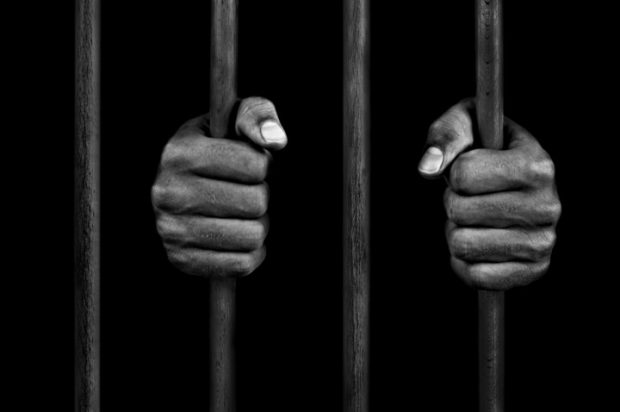
Despite the presumption of innocence enshrined in section 36 of the 1999 Constitution that states, “Every person who is charged with a criminal offence shall be presumed to be innocent until he is proven guilty,” 70 per cent of the inmates housed in Nigeria’s 255 custodial centres are awaiting trial. This is the highest percentage of awaiting-trial prisoners in Africa. According to the World Prison Brief, South Africa follows closely with about 32.9 per cent. The implication of this is that many of our custodial centres, especially those in urban areas, are congested with individuals who have not been found guilty of crimes by courts of competent jurisdiction. The conditions of living in these facilities are inhumane, impeding the effectiveness of the criminal justice system.
Within the precinct of existing literature – which includes a report by the Open Society Justice Initiative, and anecdotal evidence collected by Hope Behind Bars Africa, a non-governmental organisation working on human rights and criminal justice issues – many awaiting trial inmates are indigent and remain incarcerated because they are unable to afford the 3 Bs – Bail, Bribe and Barrister. The audacious move by the Minister of Interior, Olubunmi Tunji-Ojo, to release over 4,000 inmates across the country’s custodial centres, through the payment of over N580m in fines, clearly shows that the government is not unaware of the plight of indigent persons behind bars.
Responding to the initiative, Human rights lawyer, Femi Falana (SAN), suggested a review of the plan. According to the learned silk, the Chief Justice of Nigeria and Chief Judges of all the states and the Federal Capital Territory could visit the correctional centres and exercise their powers under the Criminal Justice (Release from Custody Special Provisions) Act, by ordering the release of all inmates whose detention are either manifestly unlawful; or who have been in custody, whether on remand or otherwise, for periods longer than the maximum period of imprisonment which they could have served had they been convicted of the offences for which they are detained. He further opined that the N500m fund could be utilised for the reformation and reintegration of the inmates.
This is not the first time the government is making such a spirited move. In 2019, Justice Ishaq Bello, Chairman of the Presidential Committee on Correctional Service Reform and Decongestion, secured the release of 5000 inmates based on factors such as the inability to pay fines, age, ill health, and illegality of detention. According to Abubakar Malami, the former Attorney-General of the Federation and Minister of Justice, the Federal Government had, through the same committee, freed over 12000 inmates in six years.
In 2020, as part of efforts to curtail the pandemic, the former Minister of Interior, Ogbeni Rauf Aregbesola, stated that amnesty would be granted to 2,600 inmates. Of this number, 885 were convicts who could not pay their fines and the Federal Government committed N21.4m for that cause.
No doubt, the move by the minister, barely six months after ascending to the ministry, is laudable. By paying the fines of those at the lowest ebb of our society, the government’s initiative offers a glimmer of hope for individuals trapped in the cycle of poverty and incarceration.
While we commend the Federal Government for this laudable intervention, there are concerns that merely releasing inmates to decongest correctional centres without tackling the root cause of their imprisonment is akin to refilling a leaky bucket without patching the holes causing the leaks. To effectively nip the problem in the bud, it is pivotal for the government to understand the interplay of the conditions facilitating prison congestion in Nigeria and their complexities. At the root of correctional congestion is the overuse of pre-trial detention, criminalisation of petty offences, over-reliance on custodial sentencing, delay in the administration of justice, stringent bail system, poor funding and management, amongst many others.
Furthermore, the majority of individuals who find themselves in conflict with the law are from low socio-economic backgrounds. This is not to excuse crime but to re-emphasise that as long as efforts are not being made to address our socio-economic challenges, recidivism will increase. Hence, now is the time to rethink how taxpayers’ money is being used, by ensuring that inmates are not just fed and sheltered but given all they need to stay away from crime.
From the foregoing, the 3Rs – Reformation, Rehabilitation and Reintegration – should be of maximum priority. It would be suicidal for efforts that foster the release of 4,000 justice-impacted individuals to be made, where nothing has been done to empower them behind bars or equip them with skills for their successful reentry into society. A long-term comprehensive approach that addresses the root causes of crime is a step in the right direction.
By investing in education, skills training, and economic opportunities for disadvantaged individuals, Nigeria can help break the cycle of reoffending and over congestion, providing pathways to a productive and law-abiding life. Strategic interventions can be developed that will provide revenue for the government, the correctional service, and the communities. Across the world, correctional industries exist that contribute to the GDP of developed countries. Statistics show that US prison workers contribute $11bn worth of goods and services per year. Human rights-compliant models that are relevant to our context can be mainstreamed into correctional administration. There is also a need to provide behavioural change and life-skills support for them. Religious bodies can play a major role here in the absence of psychologists and other experts. By implementing innovative programmes that offer educational opportunities, vocational training, counselling, and mentorship, Nigeria can empower formerly incarcerated persons to become contributing members of their communities.
In addition to having a detailed 3R strategy, the use of non-custodial measures is very necessary. The Administration of Criminal Justice Act 2015 and the Nigerian Correctional Service Act 2019, promote the use of alternative sentencing measures like community service, parole, probation, fines, etc. However, due to several constraints, its implementation has been haphazard. An integration of the activities of all criminal justice actors will make this work effective. Non-custodial measures such as restorative justice can be used at different stages of the process, especially at the police stage for simple cases. Proper sentencing guidelines incorporate non-custodial sanctions, and more importantly, structures to carry out non-custodial sanctions are apropos. The non-custodial unit needs to be properly funded and a way to go will be the enforcement of the Non-custodial Special Fund as provided for in S.44 of the Nigerian Correctional Service Act.
Additionally, the recent alteration of the 1999 Constitution that allows states to manage their own correctional facilities is a step in the right direction. Statistics have shown that 80 per cent of offenders are state offenders. If states begin to take on the burden of correctional management, they will realise the need to invest funds in community development, empowerment, education and poverty alleviation. State correctional laws are currently being drafted and it will be interesting to see the states that will champion this in the coming days.
In conclusion, while the move by the Minister of Interior to release over 4000 inmates reflects a deep concern for the condition of correctional centres and inmates; and an emergent action towards decongestion, this significant step also highlights the critical need to bridge Nigeria’s socio-economic gap. As we delve into further correctional reforms, the new administration must curate a more holistic approach towards reforms that will essentially produce a more inclusive and safe community for all.
- Oluwafunke Adeoye is a lawyer and Commonwealth scholar at the University of Oxford





